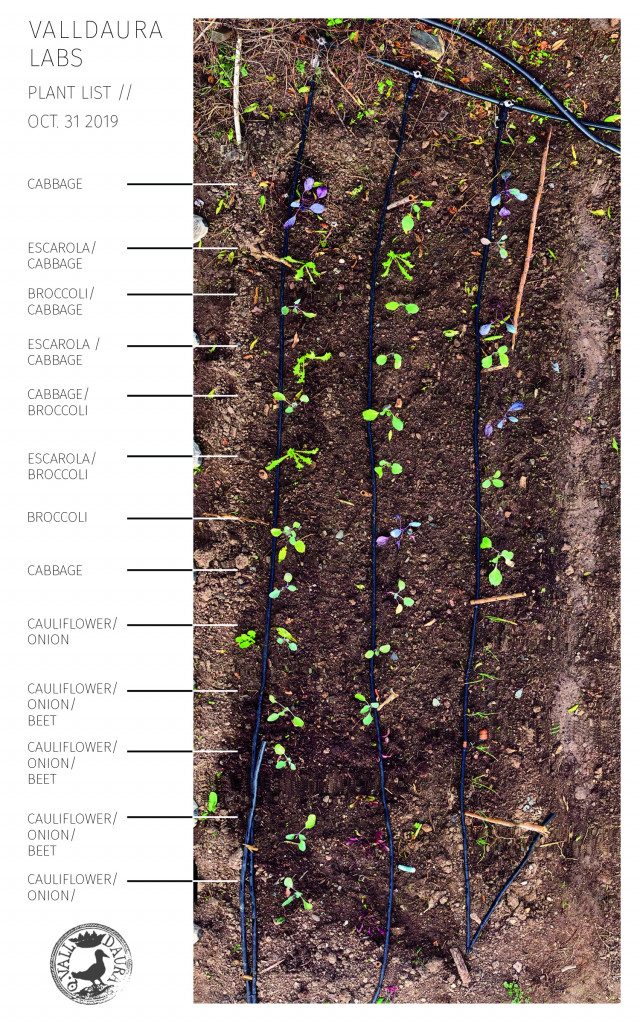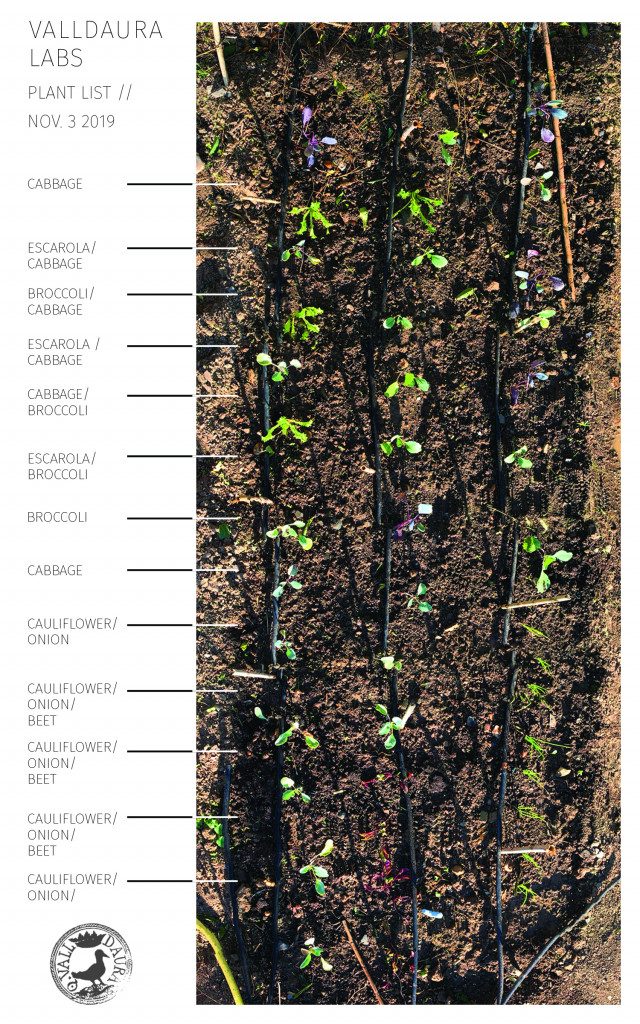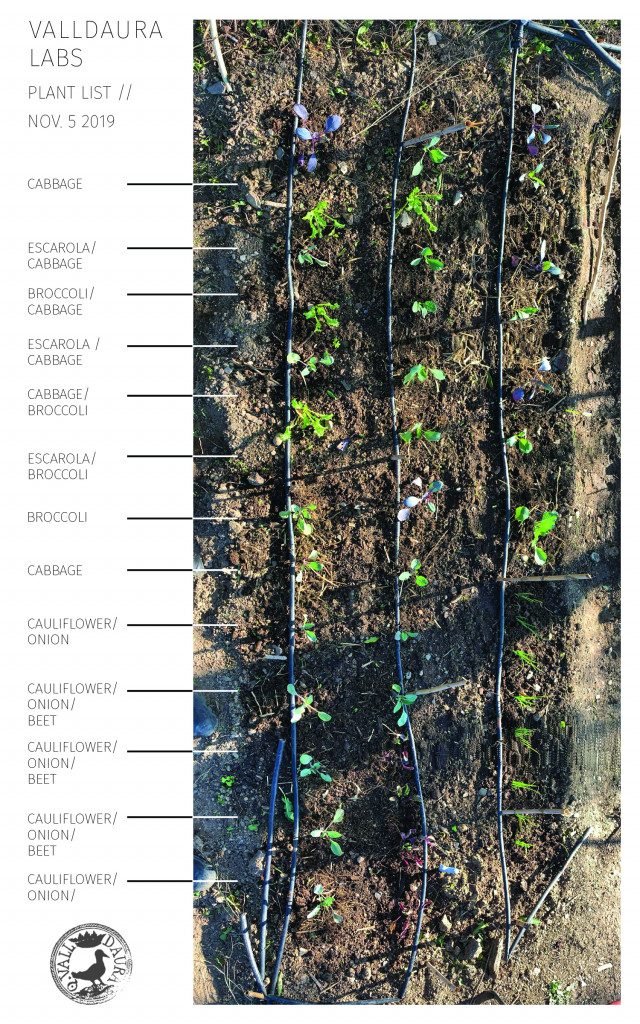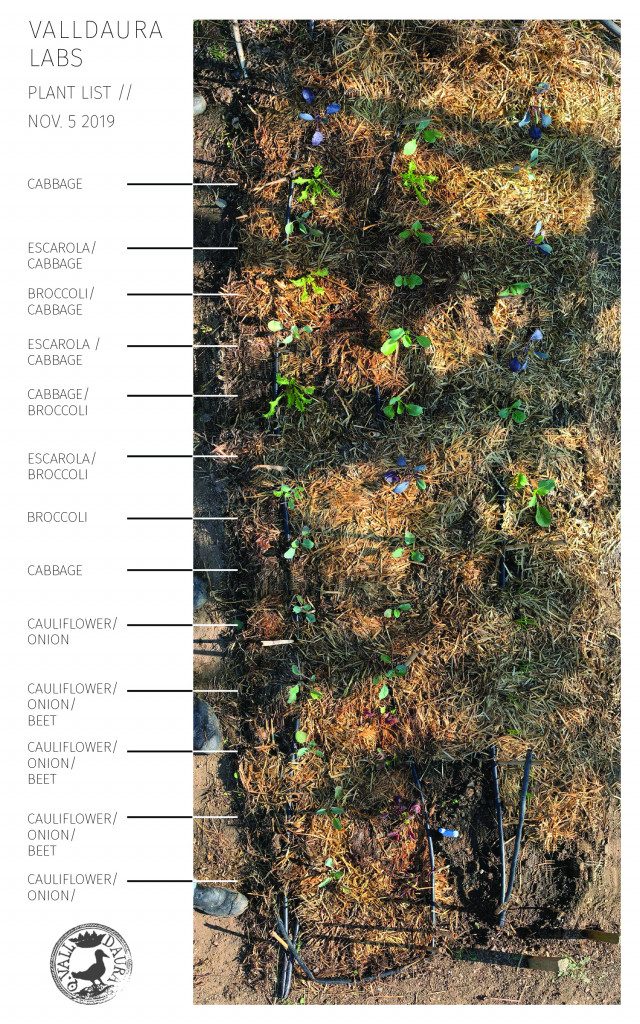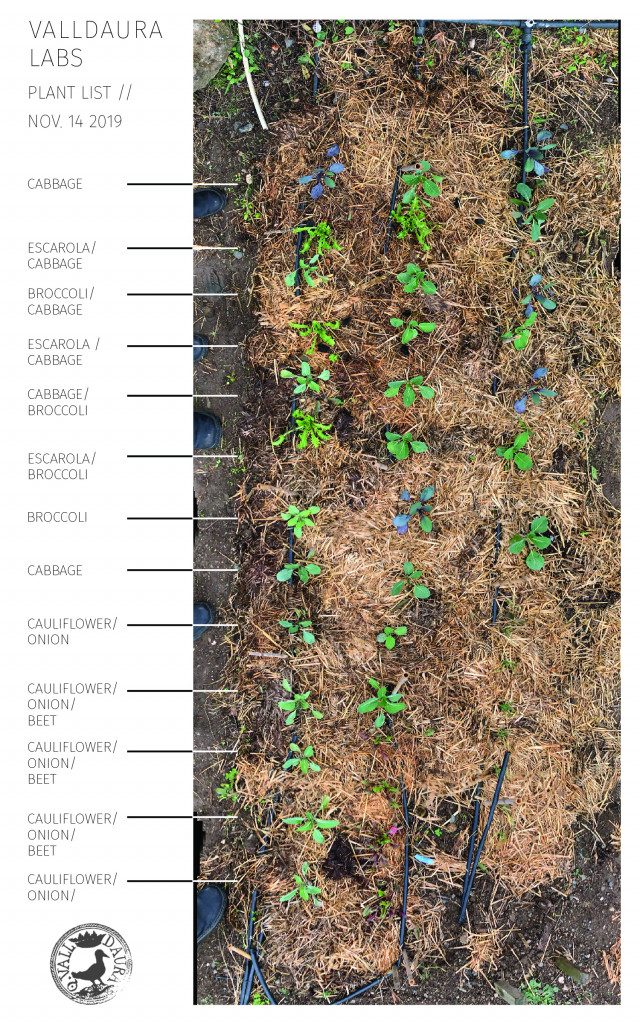SOIL PREPARATION/PLANTING
To prepare the soils of my plot, I removed all of the existing plant matter and turned the top 30cm of the soil. After several days of watering, I planted the seedlings in three rows. Each seedling was planted in a 15cm hole with a scoop of fertilizer (manure) to assist with the initial root development. I also made sure to compress the soil around the newly planted crops to ensure the roots made contact with the moist soil, ensuring that they wouldn’t dry out. Cabbages are planted towards the back to avoid shading out the smaller plants, and inter-planted with lettuce to take advantage of the space between. The smaller onions and beetroots are placed in the front.
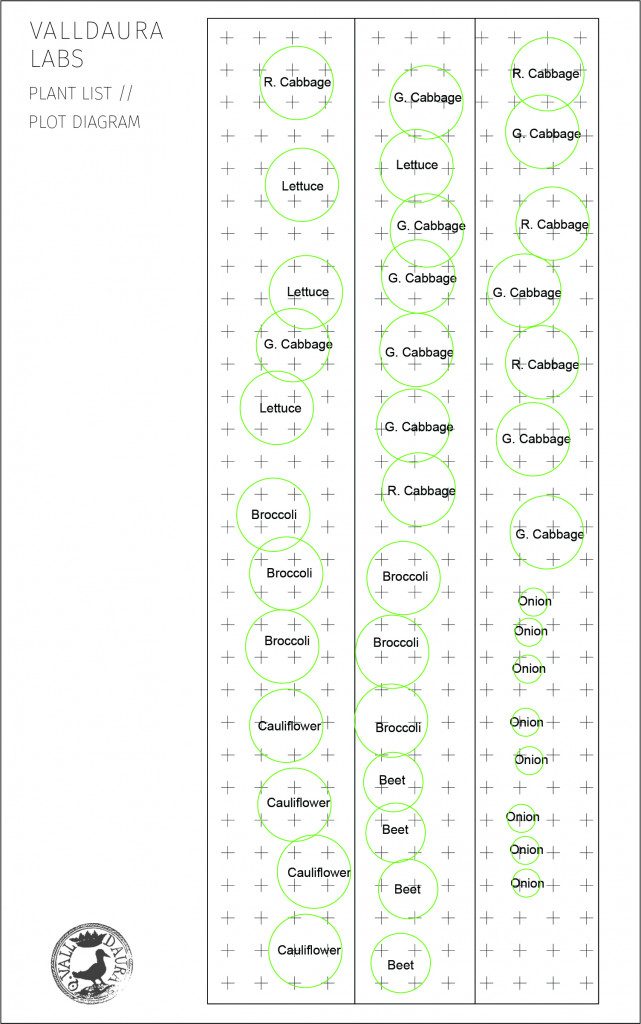
EARLY DEVELOPMENT
After two weeks of daily watering, I applied a second later of fertilizer (compost) around the base of each plant to give them a nutrient boost during the next watering. I laid down a layer of hay to insulate the bed. This mulch will also help the bed retain water by preventing evaporation and prevent the topsoil from being blown away by the wind.
In a move that was not entirely intentional, I watered the bed very regularly during the first two weeks to give the plants a head start with root development and to assist them in overcoming the transplant shock but watered them less frequently during the third week. This way, the roots might now send out deeper taps to search for water since they are not getting it as often from above.
